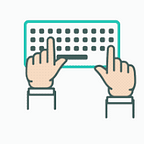5 programming languages that are reaching extinction
As technology advances, the demand for a certain programming language constantly changes. With the advancements made, new languages leap into the markets and the old ones fade away into extinction.
If you want to be the best in the IT world, you have to learn to keep up with the trends and enhance your skills with useful programming languages. Staying up-to-date will also ensure you have a secure job, and with time and practice, you will develop a knack for it.
As developers welcome new programming languages, older ones can go two ways- they either stay in use despite their failing demand or they die out completely.
We’d like to term these languages as declining rather than dying. It is a language if it is drying out today; it can always improvise and pick up tomorrow.
Here are 5 programming languages that are on the path of decline.
Perl
Once upon a time, Perl used to be a premier web programming language that was pragmatic and useful. At the same time, it also got an ill-deserved reputation of being a write-only language.
Developers thought the language is efficient and portable, but it comes with its complications. Few developers termed it as a ‘piecemeal’ language because it seemed the creators piled up features after features without thinking about how they would be synced.
The members of the Perl community even acknowledged that something was wrong, and improvised on it by creating Pearl6. But that too is a long and sad story that is never coming to life.
The language had its day, but it is a good time to ditch it and embrace the popular languages.
Objective-C
Objective-C might be a frustrating programming language but it is yet kept alive in the iOS family. It is facing a down turn now because developers are replacing it with SWIFT.
There is a ton of functionality in SWIFT that isn’t part of objC. Also, most of the code in objC can be written in a more concise way in SWIFT; the syntax is simply better and easier to understand, especially for beginners.
Compared to other languages, Objective-C is tough to write in which is why developers are now opting out of it.
While apple may support Objective-C, sooner or later it will have to start developing with SWIFT. We wouldn’t say the language is dying yet but it sure is being taken over.
.NET
The creation and destruction of .NET has an interesting story behind it.
Back in 1991, Microsoft had a soft corner for BASIC programming language when they purchased a talented (for its time) visual programming designer from Alan Cooper. Bill Gates liked the simplicity of the language and asked Alan to replace his language with BASICS. For most of the 90’s, BASIC, dubbed as Visual Basic, grew to include objects and other programming techniques.
There was a twist of events when Anders Hejlsberg, moved over to Microsoft and headed up the creation of a new language called C#. Similar to Java, it took people a while for getting used to it, but once they did, they loved it.
While Microsoft created C# to target its own CLR runtime, its engineers also created a version of Gates’ BASIC language, named it Visual Basic.NET. The language still bore the syntax of BASIC, but the coding approach was similar to that of C#.
The PC dominated the tech industry for a long time, but it is now replaced by smartphones and tabs. It is inevitable that developers use one language (C#) at the expense of the other.
Visual Basic. NET is a programming language that is replaced rather than dying.
Adobe Flash & AIR
Adobe is a platform and not a language, but to operate it, you need to use Adobe’s own version of ECMAScript, called ActionScript. ActionScript is quite similar to JavaScript, which is one of the popular languages today due to its easy application across browsers.
Initially, Adobe hogged into apple processor and refused to allow it onto the iPhone. As the demand for iPhone grew, web developers were compelled to create sites that don’t rely on Flash.
With this ongoing conflict of interest, Adobe tried to retain its stake in the programming platform via AIR, along with building AIR apps called Flex. It was almost like Flash being a disaster invented another disaster. Without any aftermath, Adobe took off hoping to keep both these platforms alive.
And between the deaths of both Flash and AIR, Adobe’s ActionScript can kiss the world goodbye as well.
Delphi’s Object Pascal
The original Delphi and its Object Pascal language offered a comfortable working environment; the language was a bit wordy but the compiler was quick and it was simpler to use to create a Windows program.
Delphi did not attain much thrust. It was eventually sold off to Embarcadero, which continues to produce it. It’s huge and sophisticated, and continues to do reasonably well — but Pascal is not given attention.
Delphi lovers exist even today and prefer using this language. However, the new generation of developers barely have any knowledge of Delphi, they consider it as an old and gone by programming language.
Conclusion
There are still developers who use these languages for programming. However, in the near future, these languages are going to be taken over by new languages that will be at the forefront.
